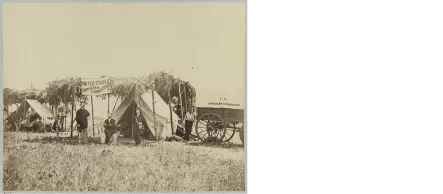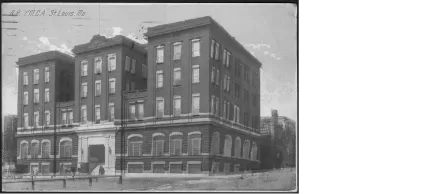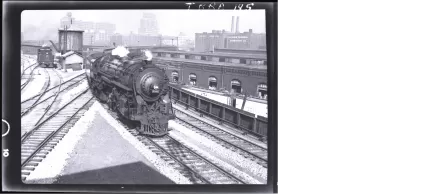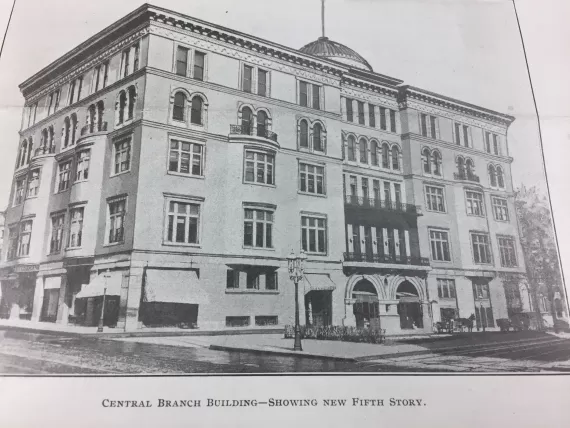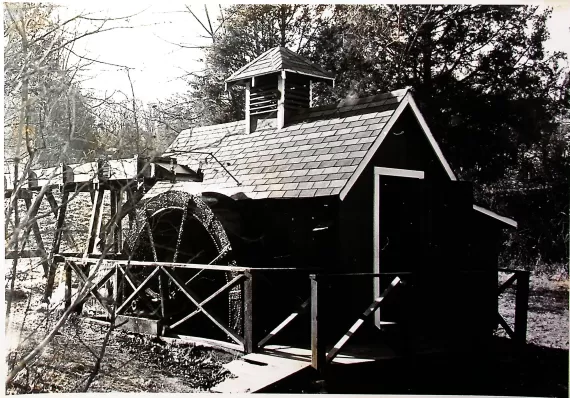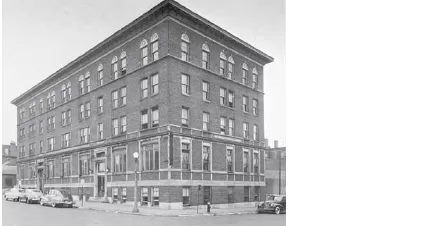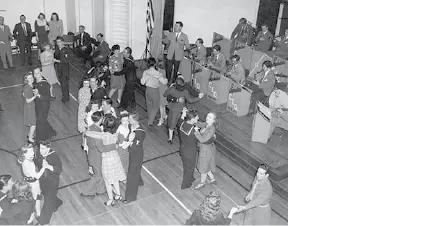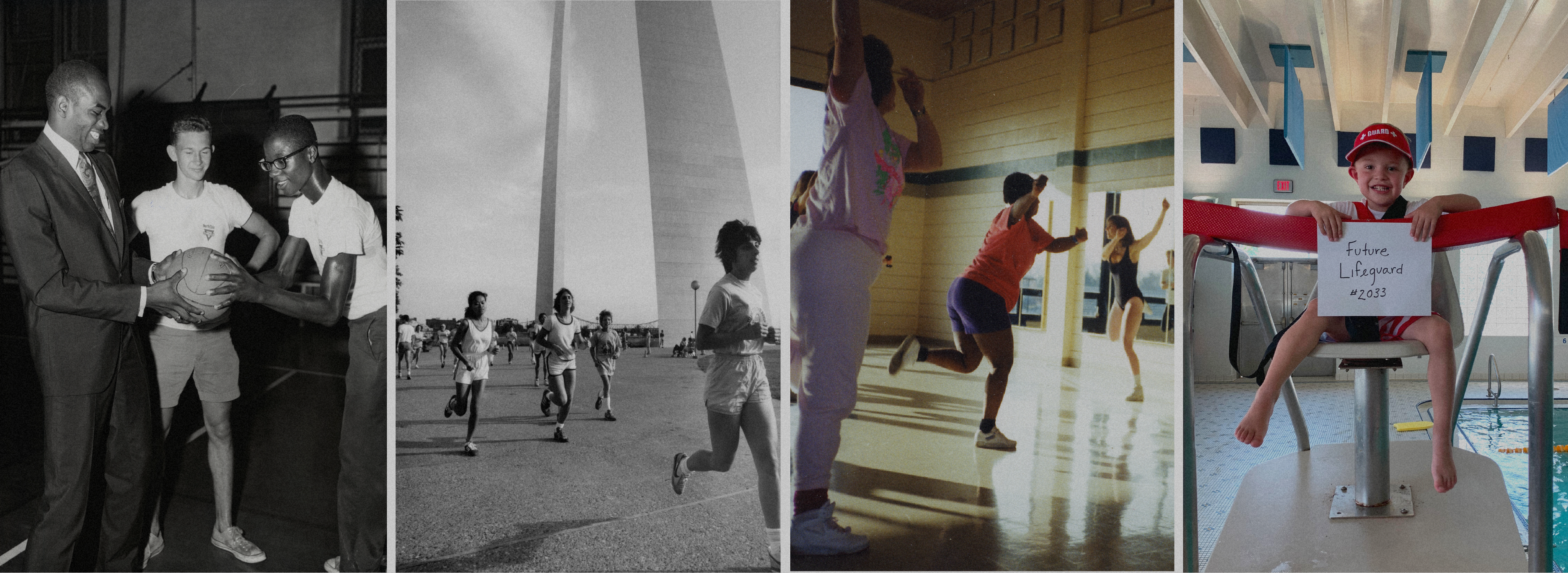
2023 marks the 170th anniversary of the Gateway Region YMCA’s impact in the greater St. Louis region. Celebrate this incredible milestone by taking a look back at the Gateway Region Y’s history and achievements over the years, along with where we are today as an organization dedicated to fostering youth development, healthy living, and social responsibility.
Founding and Early Years
In 1844, twenty-three-year-old George Williams founded the Young Men's Christian Association (YMCA) in London, England. The Y arrived in North America a few short years later in 1851 in Montreal on November 25, then in Boston on December 29.
St. Louis became the 16th city in the nation to have a YMCA in 1853. On October 13, 23 men met to organize a YMCA in St. Louis at the 2nd Baptist Church on 6th and Locust. The group adopted a constitution and by-laws at its next meeting, and elected officers at its third. By then, membership had increased to 100. The chapter held its first public meeting on November 13, 1853, where 298 new members attended. Like other YMCAs of that time, the St. Louis YMCA primarily served young men, providing them with a safe and morally uplifting environment. It quickly became a hub for recreational activities, lectures, and religious services for all.
Expanding the Mission
As the St. Louis region evolved, so did the mission of the Gateway Region YMCA. In 1862, the St. Louis Y sent agents to the frontlines during the Civil War, providing bedside and barracks visitations, along with open-air Bible readings as part of the Christian Commission.
The ending of the Civil War allowed the Y movement to spread even further across the Gateway Region. The Southwest Illinois YMCA was founded in 1866. In 1870, the St. Louis YMCA began a self-supporting German branch. On October 12, 1877, under the leadership of P.H. Murray, a YMCA for African American men was organized in St. Louis as well.
“Railroad Branches” were formed in 1880, where the YMCA sought to meet the needs of an industrial society, aiding potential members and businessmen arriving in the city by train. They were established first in the East St. Louis rail hub, then at St. Louis' Union Station, then in Illinois in 1881. YMCA staff managed these facilities, and railroad companies helped with funding. After 1883, YMCA Ladies' Auxiliaries assisted in running the rail branches.
The St. Louis YMCA started offering medical care in 1881, and by that December, 1200 people had received free treatment. The next year, the organization constructed a 25-bed hospital, which provided free care by doctors between 1 and 3 pm daily.
The St. Louis Y built its first gymnasium in 1886. In the following decade, YMCA recreation, English language classes, and more services were extended to serve St. Louis' rapidly-growing immigrant population.
Hard Times in the Late 1800s
The St. Louis YMCA encountered hard times in the late 1800s, largely due to the economic depression during the 1890s. By 1893, its branch for African American men folded, and even the prosperous German Branch was in trouble.
Adding to the economic depression, natural disasters worsened the situation. On May 27, 1896, one of the deadliest tornadoes in United States history wreaked havoc across St. Louis, known as the “Great Cyclone” or the “Great St. Louis Tornado,” estimated to have killed at least 255 people and injured another thousand, causing $10 million worth of damages (approx. $352 million today). The St. Louis YMCA was one of many to suffer. The tornado damaged headquarters located at 11th and Locust St., and completely destroyed the South St. Louis Y and Eastside Railroad branches.
Things are Looking Up
Despite extraordinary expenses, the organization emerged from the 1890s free of debt, and the association was able to look to the future. The new headquarters, known as the Central YMCA, was dedicated on October 31, 1898 on North Grand at Franklin Street. This YMCA had merged with two German YMCAs, the Railroad YMCA, and the African American YMCA. The building was 4 stories tall and became the first Y in St. Louis to have a swimming pool and offer swimming lessons.
In 1904, people flooded to St. Louis from all across the world for the Louisiana Purchase Exhibition, more commonly known as the St. Louis World’s Fair. The St. Louis YMCA was given space for a tent, or more so a "tabernacle”, near the fair's Morocco Building. In this summer-long series of open-air Bible meetings, YMCA volunteers provided fairgoers with lodging and religious instruction. In the process, the association gained wide exposure.
The World's Fair also was the starting point for the founding of YMCA Trout Lodge and YMCA Camp Lakewood! A man named August Lauth came from Paris to St. Louis for the 1904 World's Fair, and in 1910, migrated to the Potosi area to develop trout hatcheries. He diverted the spring creek into breeding ponds, using the water wheel previously developed for power to operate a saw mill, raised rainbow trout, packed them in ice, and sent them by wagon and train to St. Louis to be served in fancy hotels and restaurants. The land was then bought in 1926 by a group of St. Louis families, and in 1946, it was all officially sold to the YMCA and became known as YMCA Trout Lodge. Joseph Sunnen later built a 35-acre lake, which led to the opening of YMCA Camp Lakewood in the summer of 1949.
After many attempts to organize a YMCA for African American men, in 1912, the Afro-American Young Men’s Christian Home Association was re-admitted to the association. In 1917, land was purchased for the branch at the corner of Pine and Union, named the Pine Street Branch, which stood until the 1960s.
More Hard Times Ahead: World Wars and the Great Depression
The YMCA played a significant role during both World Wars. During World War I, it provided support to soldiers and their families through canteens and recreational facilities, volunteers visiting the wounded in hospitals, Overseas Service Branches looking after soldiers' physical and spiritual needs, and Y preachers holding Bible meetings on the Western Front.
Following World War I, in January 1921, the Central YMCA, St. Louis Y’s headquarters at the time, was destroyed by a fire, forcing the YMCA to seek additional locations for their programs and staff in St. Louis. They ran a Capital Campaign in 1924, resulting in the Central Branch moving to a new location at 16th and Locust in 1926, changing its name to the Downtown YMCA. This Capital Campaign also gave way to the addition of several other branches.
The Stock Market crash of 1929 and the resulting Great Depression posed additional challenges. In order to keep men hopeful during these times, the YMCA offered job training and employment bureau programs, vocational guidance and counseling services, and recreational activities. The Y also offered free tuition and membership to those unable to pay, along with plenty of youth programs to address the needs of St. Louis' children.
In World War II, the Gateway Region YMCA once again rallied in support of troops, offering assistance to those on the home front. Association branches provided lodging, recreation, and entertainment to troops in transit. The St. Louis YMCA's Jefferson College, in association with the U.S. Civil Aeronautics Authority, trained both military pilots and civilian men and women for technical jobs in the war industry. Each Saturday evening, the St. Louis Y offered soldiers the chance to socialize and lift their spirits at USO dances. YMCA volunteers were no less active on the war front overseas. In cooperation with the International Red Cross, YMCA efforts monitored conditions in prisoner of war camps, and, with supplies of food, medicine, and books, attempted to relieve the hardship of prisoners themselves.
After World War II, the organization turned to the problems of postwar readjustment. In 1944, the St. Louis Y formed a committee to map out the agency's response to the problem of returning veterans, deciding to continue the association's vocational guidance and job placement programs funded by $17,500 of support. They had 4 full-time staff members tasked with addressing veteran concerns, who modified job training, educational, and vocational programs to meet postwar conditions. Click here to learn how the Gateway Region YMCA currently offers military support.
The Y as a Driving Force
After recovering in the mid-1900s, the St. Louis YMCA has seen plenty of growth in expansion of locations and programming/services. Notably, in 1946, land was purchased for a Family and Conference center in Potosi, MO, which we now know and love as YMCA Trout Lodge. Joseph Sunnen assisted with the construction of Boys Camp (now Camp Lakewood) in 1949. During the Civil Rights Movement in the 1960s, the Gateway Region YMCA became a symbol of unity and inclusivity, opening its doors to all races and backgrounds, and embodying the values of equality and social justice. Click here to learn about the Gateway Region Y's current Diversity, Inclusion, and Global Engagement (DIG) efforts. The Lamplighters Society was chartered in 1972. In 1978, the Carondelet branch held its first book fair. In 2016, the YMCA of Greater St. Louis and YMCA of Southwest Illinois merged to officially form the Gateway Region YMCA!
Worldwide, the YMCA has been a driving force in the development of many holidays, sports, traditions, etc.
- America’s first “English as a Second Language” or ESL courses began in the Cincinnati YMCA in 1856.
- Robert Roberts at the Boston YMCA created and popularized the term “body building” in 1881.
- James Naismith invented basketball at the international YMCA Training School in 1891.
- Volleyball was invented at the Holyoke YMCA in Massachusetts in 1895.
- George Corsan at the Detroit YMCA invented group swimming lessons in 1907.
- Father’s Day was founded by Sonora Louise Smart at the Spokane, Washington YMCA in 1910.
- Racquetball was invented at Greenwich YMCA in Connecticut in 1950.
Today and Beyond
The history of the Gateway Region YMCA is a testament to the enduring power of community and the importance of adapting to changing times. From its humble beginnings as a Christian association for young men, it has evolved into an organization that serves people of all backgrounds and ages. The Gateway Region YMCA now services 24 traditional branch locations and approximately 120 program sites. The YMCA’s dedication to promoting healthy living, youth development, and social responsibility ensures that its legacy will continue to thrive in the Gateway Region for generations to come.
This is our story. Now we want to hear YOUR story.
